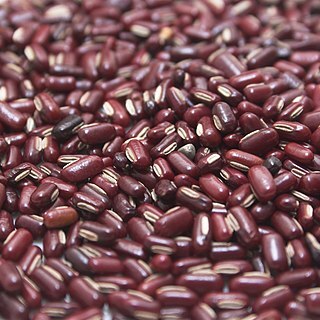Annual twining herbs. Stems slender, 1 m or more, pilose with yellow hairs when young, later glabrescent. Stipules peltate, lanceolate or ovate-lanceolate, 10-15 mm; leaflets ovate or lanceolate, 10-13 × 5-7.5 cm, sparsely pubescent on veins of both surfaces, base broadly cuneate or obtuse, entire or slightly lobed, 3-veined from base, apex acute. Racemes axillary, 2-or 3-flowered; bracts lanceolate; pedicels short. Calyx campanulate, 3-4 mm; teeth deltoid. Corolla yellow; standard oblong, ca. 1.5 cm, apex emarginate; wings obovate. Legumes linear-terete, 6-10 × ca. 0.5 cm, glabrous. Seeds 6-10, dull red, brown, black, or speckled, oblong, 4-9 × 3-3.5 mm. Fl. May-Aug.

